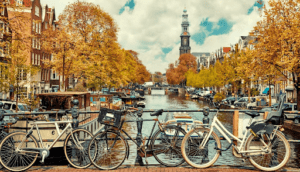Pagan Ancient Festivals Reimagined in Modern Europe: A Cultural Retrospective

Updated On: April 21, 2024 by Fatma Mohamed
Across Europe, a resurgence of interest in ancient traditions has brought to light the enduring legacy of Pagan ancient festivals. These celebrations, which once marked the rhythm of the seasons and the pivotal moments of human life, are experiencing a modern renaissance. More than mere history, these festivals are woven into the very fabric of European culture, symbolising a continuity that has transcended centuries.
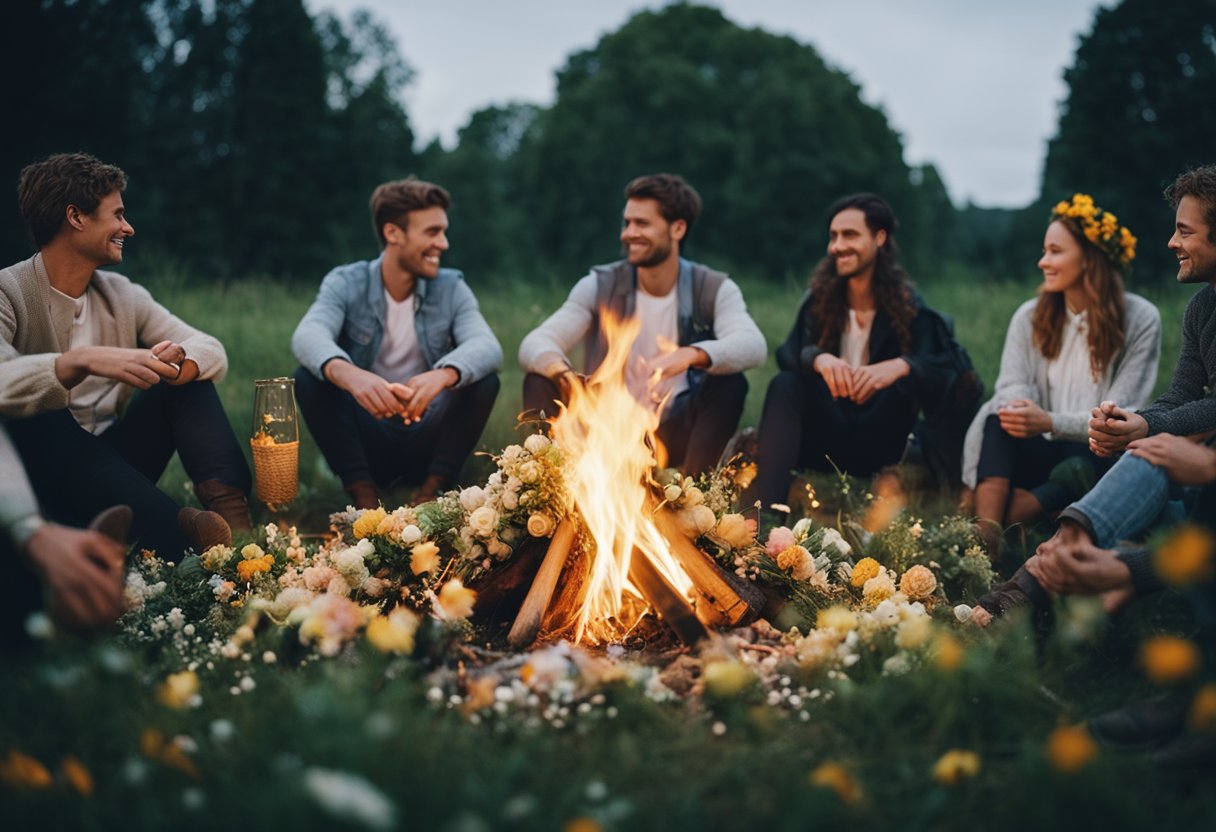
We find that contemporary Europeans are not only looking to the past for inspiration but are also reinterpreting these age-old celebrations. The revitalisation of Pagan traditions speaks to a broader desire to connect with a more naturalistic and spiritual past. From the fire-lit rituals of the winter solstice to the bountiful harvest festivals in autumn, these traditions are being embraced in new forms that honour their Pagan roots. It is a movement that reflects a deepening appreciation for tradition, spirituality, and community.
Table of Contents
Historical Overview of Paganism in Europe
As we unravel the tapestry of European religious heritage, it’s vital to recognise the profound and complex influence Paganism has had on the continent’s spiritual landscape. From the ancient to the medieval, Pagan practices were foundational to European cultures.
Pre-Christian Beliefs and Practices
The bedrock of pre-Christian Europe was an intricate mosaic of polytheistic beliefs and rituals. Celtic tribes venerated a pantheon of deities, intertwining their spirituality with the natural world, and this was mirrored by the nature-centric worship of the Norse. Druids, revered as Celtic priests, held sway over spiritual and judicial matters, guiding societal norms with their wisdom and connection to the divine. Greek and Roman mythology dominated the Mediterranean, with gods and goddesses embodying various aspects of life and the cosmos.
Our understanding of these systems is derived from archaeological sites, classical texts, and oral traditions. They reveal a Europe bustling with festivals and sacred ceremonies honouring gods, marking seasons, and celebrating life’s cycles.
Transition to Christianity
The introduction of Christianity to Europe heralded a new epoch that fundamentally altered the religious fabric of the continent. The process was gradual, spanning several centuries and often synthesising with local Pagan customs. Saxon and Anglo-Saxon resistance to conversion in the British Isles illustrated the steadfastness of Pagan practices until missionaries like St. Augustine made inroads with royal conversions, laying the groundwork for widespread religious change.
In Nordic regions, fierce clashes between the Old Ways and the new Christian order were emblematic of this transition. While the Roman Empire’s embrace of Christianity set a precedent, influencing surrounding regions, it invariably blended with pre-existing Pagan practices, such as the Roman festival of Saturnalia influencing Christmas celebrations.
Our narrative demonstrates how Paganism, imbued with cultural significance, gradually metamorphosed, laying down a rich stratum in Europe’s spiritual heritage that lingers in today’s folk customs and modern Pagan revivals.
Pagan Ancient Festivals and the Wheel of the Year
The Wheel of the Year is a calendar used by many modern Pagans that celebrates a cycle of the Earth’s seasons. Each festival, or sabbat, corresponds with significant astronomical events, marking the solstices, equinoxes, and the midpoints between them.
Significance of the Solstices and Equinoxes
These cardinal points of the year have played a key role in human history, helping societies to mark time and celebrate the changing of the seasons. The Summer Solstice, being the longest day, celebrates the full power of the sun and is often referred to as Litha. Conversely, the Winter Solstice, the shortest day of the year, is a time of rebirth and reflection and is called Yule. The Spring Equinox and Autumn Equinox represent times of balance and transition when day and night are of equal length. Pagans observe these as times of change, reflecting the cycles of life, death, and rebirth.
Major Pagan Sabbats
In addition to the solstices and equinoxes, there are four major sabbats that are considered the high points of the Pagan calendar:
- Samhain: Celebrated on October 31st, Samhain marks the end of the harvest season and a time to honour the dead. It is also considered the Pagan New Year.
- Imbolc: Falling at the beginning of February, Imbolc signifies the awakening of the Earth and the early signs of spring.
- Beltane: Held on the first day of May, Beltane is a festival of fire that celebrates fertility and the blossoming of life.
- Lughnasadh: Occurring in early August, Lughnasadh is a time to give thanks for the first fruits of the harvest and recognise the hard work that goes into cultivating the land.
Each of these festivals is rich in tradition and symbolism, reflecting the deep human connection to the cycles of nature. As we celebrate these turning points in the year, we not only connect with our ancient roots but also find relevance and meaning in their themes for our modern lives.
Art and Symbols in Paganism
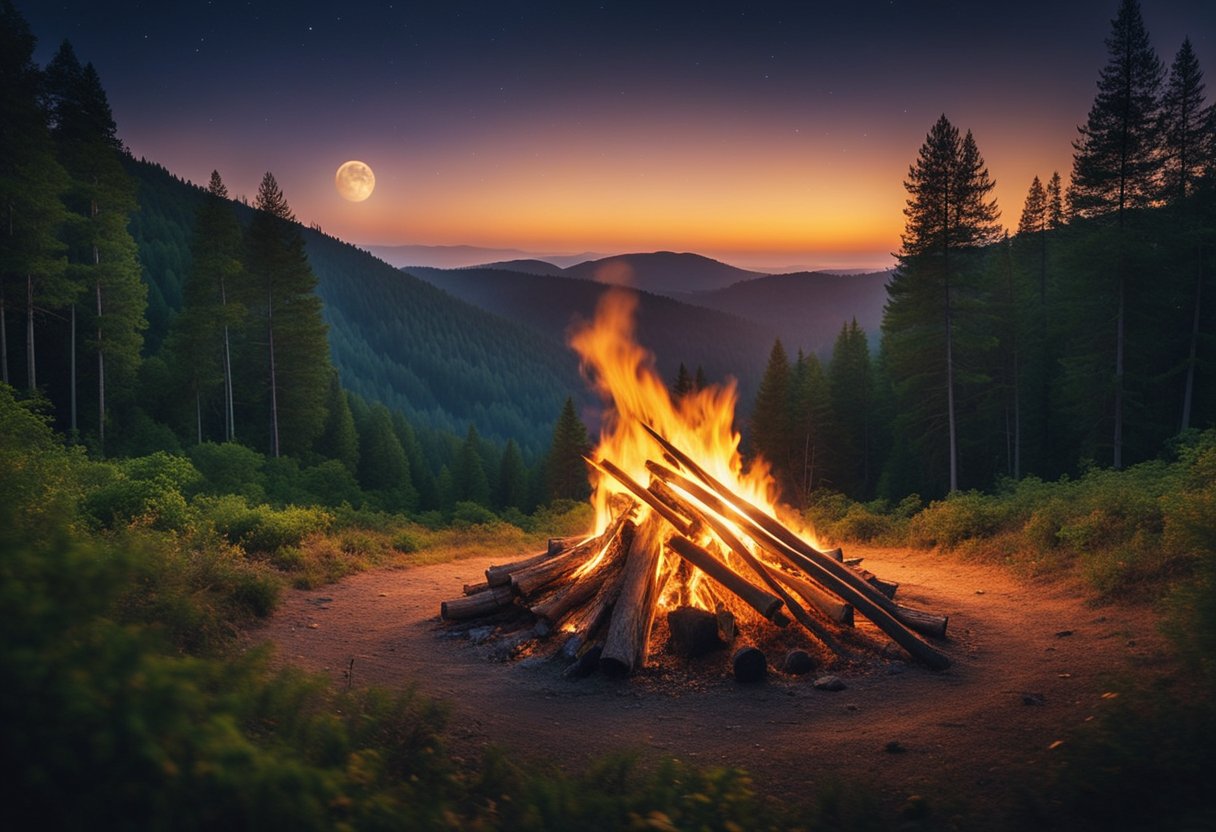
Pagan traditions richly incorporate art and symbols to convey spiritual beliefs and practices. We’ll explore the vibrant art in pagan ceremonies and the meanings behind common pagan symbols.
The Role of Art in Pagan Ceremonies
Art functions as a crucial element in pagan rituals, often serving both a decorative and symbolic purpose. Ceremonies may include the creation of altars adorned with natural elements like stones and plants, which pay homage to nature and the Earth. These art pieces are crafted with intention and care, aiming to connect participants with the gods and goddesses they revere. Furthermore, the use of art in these contexts is more than aesthetic; it’s a form of expressing reverence for tradition and the divine.
Common Pagan Symbols and Their Meanings
Paganism is replete with symbols that hold deep spiritual significance:
- Triple Moon: Associated with the goddess, this symbol represents the waxing, full, and waning phases of the moon, reflecting the lifecycle of the maiden, mother, and crone.
- Wheel of the Year: Symbolising the annual cycle of seasonal festivals, it marks important commemorative times for pagans who follow the Earth’s natural cycles.
Each of these symbols contributes to the rich tapestry of pagan cultural expressions, maintaining the connection between the physical and spiritual realms.
Sacred Sites and Pagan Heritage
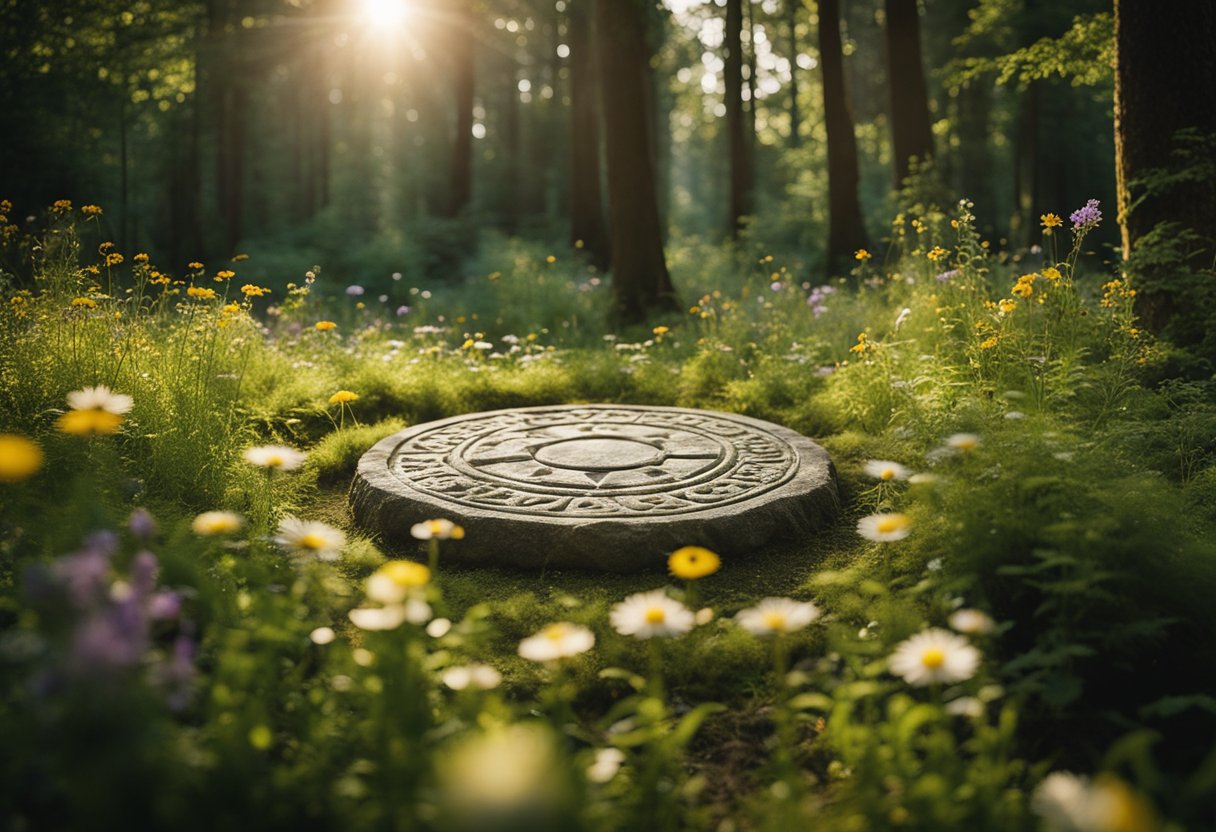
In this section, we explore the significance of ancient Pagan sites and the importance of preserving this integral part of Europe’s historical tapestry.
Stonehenge and Other Historical Locations
Stonehenge stands as one of the most iconic and tangible connections to Britain’s Pagan past. Located in Wiltshire, England, this prehistoric monument is believed to have been used for Druid ceremonies and Gaelic festivals, resonating with a heritage dating back thousands of years. Equally compelling are Scotland’s Callanish Stones, which similarly evoke the Pagan rituals of ancient times.
Preservation of Pagan Heritage
The preservation of Pagan heritage is crucial in maintaining the sacredness of these sites. Organisations across England and Scotland are dedicated to ensuring that such sites are not only protected from physical damage but also from neglecting the cultural narratives that imbue them with meaning. The integration of ancient Pagan practices into modern observances continues to highlight the enduring legacy of Europe’s spiritual landscapes.
Modern Paganism in Europe
Modern Paganism in Europe has seen a resurgence in recent decades, focusing on the revival of ancient practices and the celebration of seasonal festivals. We are witnessing a growing community of Modern Pagans finding spiritual meaning and community through these revived traditions.
Wicca and its Influence
Wicca, a prominent strand of Modern Paganism, was developed in the mid-20th century by Gerald Gardner. It draws on older occult traditions and English folklore. Wicca places a significant emphasis on the worship of both a goddess and a god, the observance of nature-based festivals, and the practice of magic. The influence of Wicca is evident in popularised ritualistic practices and the Wheel of the Year, which includes the festival of Beltane, celebrated for its embodiment of fertility and the start of summer.
Contemporary Druidry
Contemporary Druidry, inspired by the ancient Celtic priesthood, synthesises mythological elements with a reverence for nature. Modern Druid groups organise events such as the Summer Solstice celebrations at historical sites like Stonehenge in England. These gatherings highlight a deep connection to the cycles of nature, providing a space for Modern Pagans to form communities based on shared values and traditions.
The Revival of Pagan Festivals
The revival of Pagan festivals revives the old to meet the modern spiritual and communal needs. These festivals, rooted in historical celebrations, have been adapted to suit contemporary life. For instance, Modern Pagans often gather for Beltane and Summer Solstice festivities, which emphasise the turn of the season with dances, rituals, and community bonding. Through these modern re-imaginings of ancient festivals, a rich and diverse tapestry of Modern Pagan practices is woven into the cultural fabric of Europe, honouring both the past and the present.
Cultural Impact on Modern Festivals and Holidays

In exploring the intricate web of modern European festivals and holidays, we uncover layers of ancient pagan practices elegantly woven into the very fabric of contemporary celebrations.
From Pagan to Christian Celebrations
Historically, Christian festivals absorbed elements of pre-existing pagan traditions to aid in the transition from old beliefs to new. The transition from pagan solstices and equinoxes to significant Christian holidays like Christmas and Easter is a prime example. This synthesis of beliefs helped merge communities and create a more unified cultural landscape.
Pagan Elements in Christmas and Easter
Christmas: The modern celebration of Christmas famously incorporates numerous pagan elements in its festivities. The act of decorating evergreen trees, for instance, has its origins in pagan customs celebrating the Winter Solstice. The Yule log burnt in many households is a nod to the Norse tradition of Yule, a midwinter festival heralding the return of the sun.
Easter: Easter, while a cornerstone of the Christian calendar marking Jesus’ resurrection, also contains vestiges of pagan practices. The very name “Easter” is believed to be derived from Eostre, the Anglo-Saxon goddess of spring and fertility. Traditions such as the Easter egg hunt are reminiscent of pagan spring rituals, celebrating rebirth and new life.
In both festivals, these enduring pagan traditions serve as a poignant reminder of our shared heritage. They illustrate how our collective experience has been shaped by a history that is both rich and diverse, allowing us to appreciate the deep roots that influence our modern festive tapestry.
Pagan Traditions and Family Celebrations
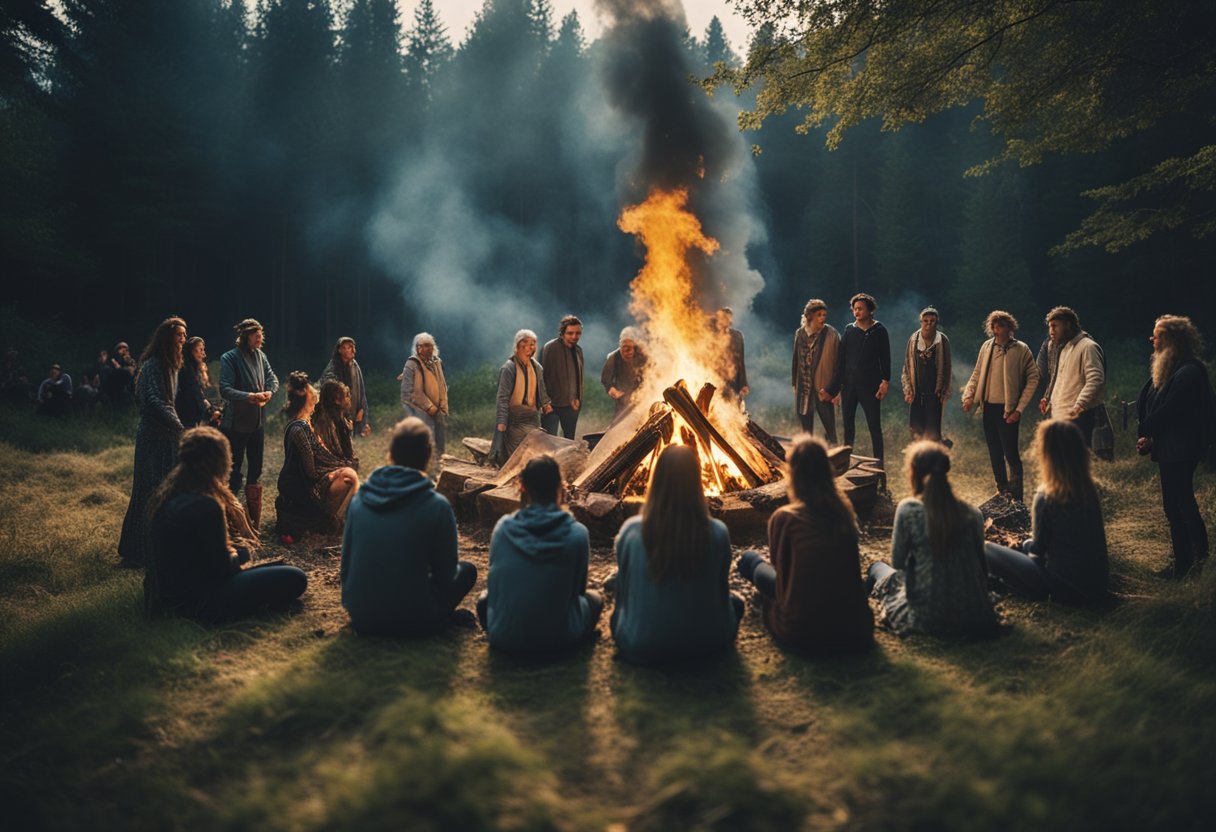
Across modern Europe, ancient pagan festivals are being re-envisaged within family celebrations, blending tradition with contemporary life. We witness a resurgence of interest in fertility symbols, fire rituals, and feasting, all adapted to fit the home setting in various engaging ways.
Passing Down Traditions
Tradition forms the backbone of family heritage. It is through us—the families—that customs survive and evolve. In the privacy of our homes, we recount tales of old and practice ceremonies that have been part of our cultural fabric for centuries. We see this in the home celebrations that often include the use of fire as a symbol of life and renewal. Lighting candles or hearths becomes a tribute to ancestral wisdom, ensuring that the warmth of the past continues to ignite the future.
Pagan Celebrations in the Home
In our homes, pagan celebrations take a distinctive, intimate form. We incorporate activities such as crafting fertility symbols like corn dolls or eggs, which are both emblematic of new life and crucial to creating a sense of continuity. Feasting together is a highlight, welcoming the changing of seasons with dishes that are often prepared using recipes handed down through generations. Such festivities not only nourish the body but also forge and reinforce the familial bonds that hold us together.
Seasons and Agriculture in Paganism
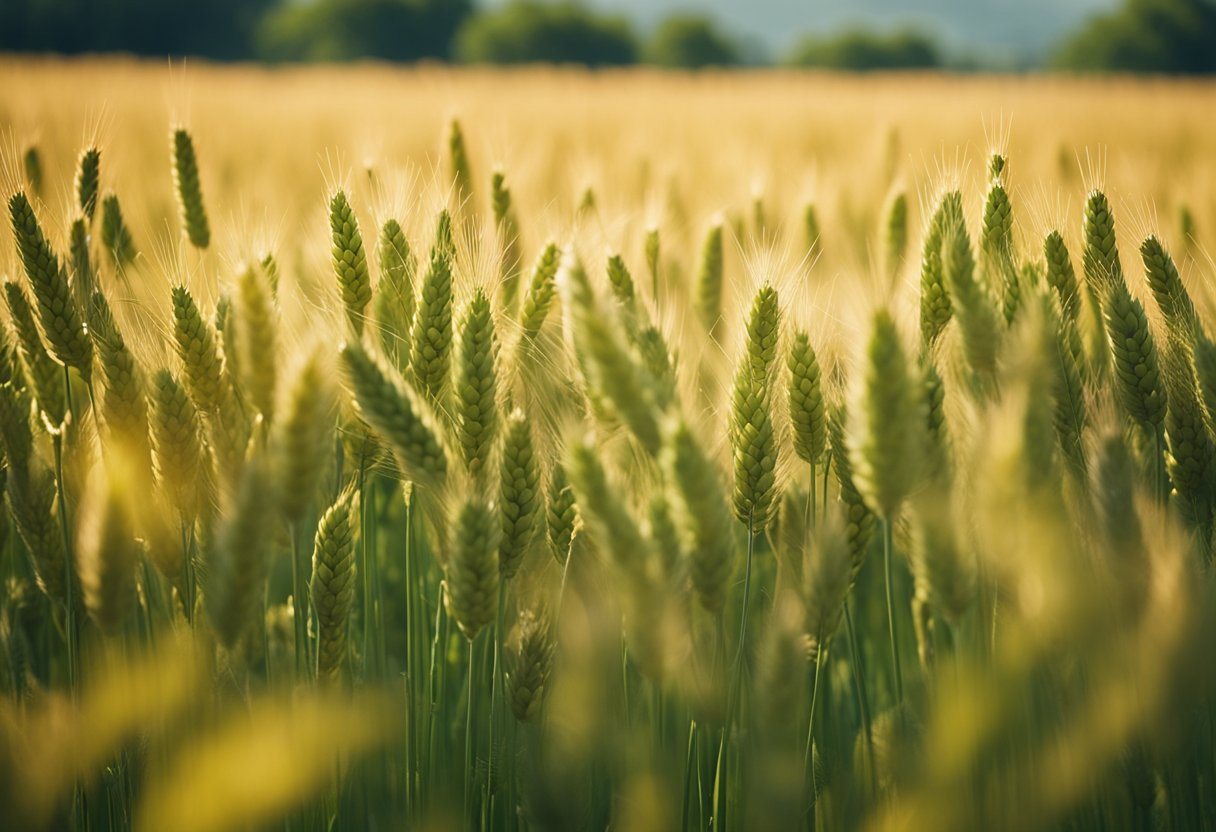
In Paganism, the shift of seasons is deeply entwined with agricultural cycles, playing a central role in both historical and contemporary practices. Acknowledging the significance of Nature’s phases, these customs are celebrated through a series of sabbats and festivals.
Planting and Harvest Festivals
Planting times and harvest festivals form the cornerstone of Pagan agricultural customs. The beginning of the planting season is celebrated with Beltane, a festival that marks the start of the fertility cycle in Nature. It’s the time when cattle are driven out to the summer pastures—a crucial element of pastoral agriculture. Moving to the culmination of the growing season, Lughnasadh is the first of the harvest festivals, honouring the grain harvest and the fruits of agricultural labour.
On the other side of the year, Samhain signals the end of the harvest and a time to prepare for the colder months. This festival involves celebrating the last of the crop gatherings and acknowledging the “death” of the year before the onset of winter. Similarly, Mabon, the autumn equinox, is a period to give thanks for the harvest. Historically, these festivals had real implications for survival and were seen as crucial markers in the agricultural year.
Nature’s Cycle and Pagan Lore
The Pagan lore intertwines stories and traditions that reflect the intimate relationship between Pagans and the cycles of Nature. Each of the eight sabbats within the Wheel of the Year represents a significant point in Nature’s cycle, and this perpetual wheel symbolises the belief in the rebirth and renewal of Earth.
Ostara, the vernal equinox, and Yule, the winter solstice, are two such points that highlight the changing dynamics of light and dark and the balance between them. To pagans, these are not merely symbolic but are rooted in the observation of Nature and her cycles, influencing when to plant, tend, and harvest crops. The practices encapsulated in these stories are as much about honouring the Earth as they are about ensuring a bountiful yield in the coming seasons.
In the modern reinterpretation of these festivals, emphasis is often placed on the spiritual connection with the land, recognising the wisdom in these old ways even as the world around us becomes increasingly technologically driven.
Mythology and Deities in Pagan Beliefs
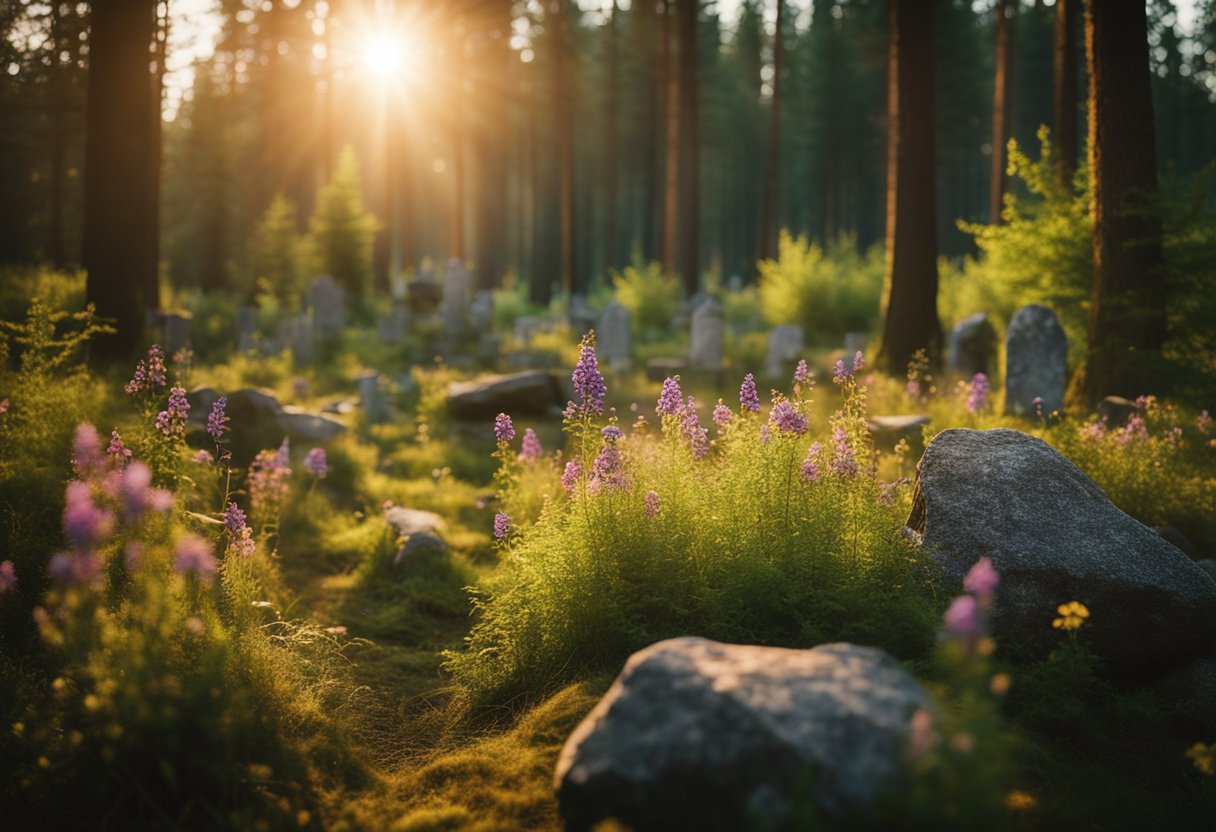
In exploring pagan beliefs, we encounter a rich tapestry of mythology and deities that have shaped the spiritual practices of ancient Europe. These stories and figures have been passed down through the ages, continuously reimagined and retold in contemporary society.
Pantheon of Gods and Goddesses
Pagan traditions often feature a diverse Pantheon of Gods and Goddesses, each embodying different aspects of life and nature. Norse mythology presents a well-documented pantheon, including Odin, the all-father god of wisdom and war, and Thor, the thunderous god of storms and strength. In Celtic beliefs, we find deities like Brigid, the goddess of fire, poetry, and healing, reflecting a deep connection to creativity and the natural world.
Moving to the Greek pantheon, we uncover iconic figures such as Zeus, the ruler of the gods and the sky, and Athena, the goddess of wisdom and strategic warfare, whose stories pervade Western culture to this day. Likewise, the Roman pantheon, which closely mirrors its Greek counterparts, includes Jupiter, the king of the gods, and Venus, the goddess of love and beauty.
Mythological Tales and Lore
The Mythological Tales and Lore among these cultures serve not only as parables but as explanations for the mysteries of the universe. Norse legends speak of Yggdrasil, the world tree, connecting nine realms, while tales like Ragnarok depict an apocalypse and the rebirth of the world. Celtic myths often revolve around the Otherworld, a realm of everlasting youth, beauty, and happiness.
In Greek mythology, epic narratives such as the Odyssey and the Iliad by Homer have immortalised heroes and gods alike, guiding modern interpretations of virtue, heroism, and fate. Roman myths borrowed heavily from Greek stories but integrated them into Rome’s history, giving rise to legends like Romulus and Remus, the twin founders of Rome.
Through these stories and deities, paganism provides a worldview encompassing the divine’s immanent and transcendent qualities, a heritage which continues to influence modern spiritual practices across Europe.
Pagan Spirituality and Religious Practices
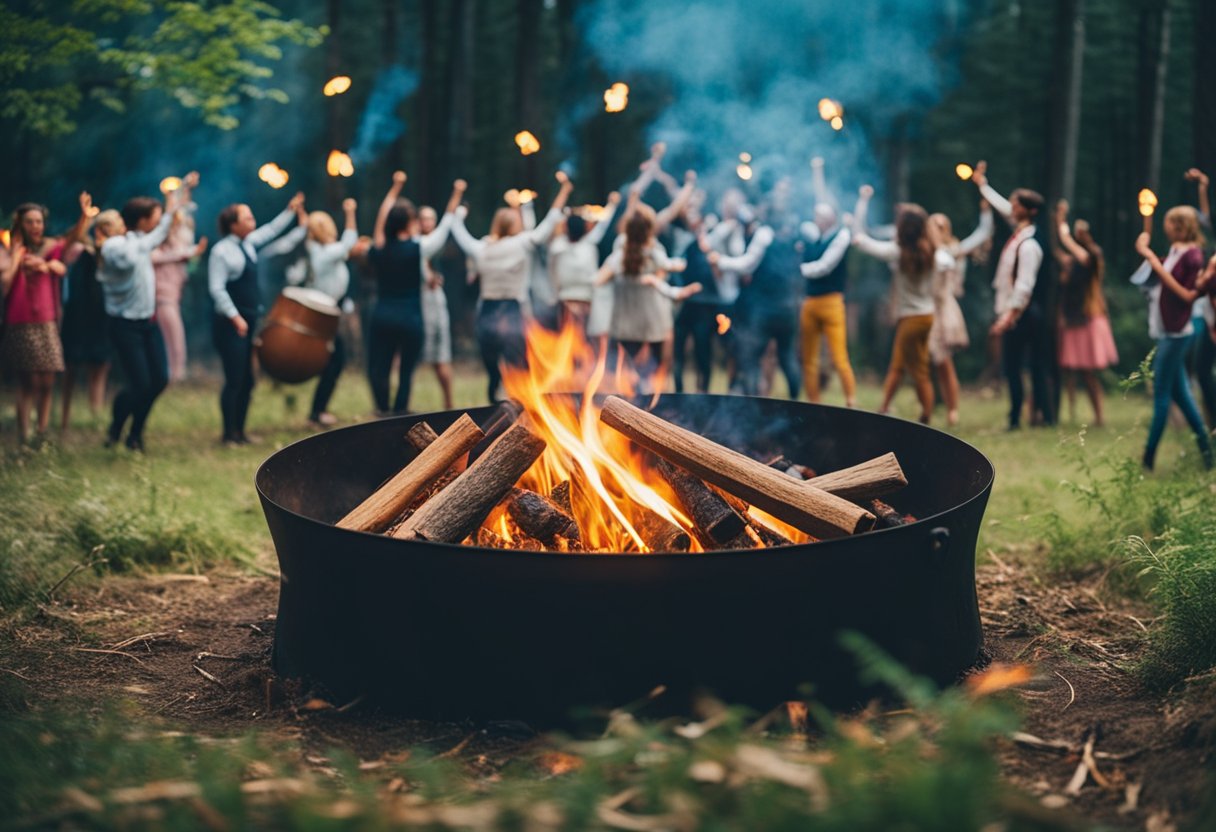
Paganism entails a rich tapestry of spiritual and religious practices often rooted in reverence for nature and a belief in the interconnectedness of all life. We find that, across Europe, these ancient customs are continually being reimagined and integrated into modern life.
Rituals and Ceremonies
Pagans engage in a variety of rituals and ceremonies aimed at celebrating the cycles of nature, honouring deities, and marking life’s milestones. Rituals may include seasonal festivities, such as those detailed in Modern Pagan Festivals: A Study in the Nature of Tradition, which are observed with great enthusiasm and serve as a connection to the past while applying a modern understanding and context.
Ceremonial practices can be both communal and solitary, leveraging symbols, invocations, and traditional activities like maypole dancing or the lighting of bonfires—echoes of ancient European practices. They not only foster a sense of community but also support individual spiritual growth, offering a path to personal enlightenment.
Spiritual Pathways and Enlightenment
Within Paganism, spiritual pathways are diverse, encouraging personal exploration and the pursuit of enlightenment through various means such as meditation, divination, or ecological activism. Pagan beliefs often respect individual enlightenment as a natural byproduct of one’s deepening connection with the divine aspects of the natural world.
Enlightenment, in Pagan terms, is about understanding and experiencing a harmonious balance with nature and recognising the cycle of life, death, and rebirth. Influences from ancient spiritual systems are interpreted and rekindled through modern practices, as discussed in Pagan Spirituality: Ancient Roots and Modern Branches, which emphasises both tradition and personal discovery in the development of one’s spirituality.
Frequently Asked Questions
As we explore the intersections between ancient pagan traditions and modern European festivals, let’s address some common questions about their connections and practices.
How are contemporary European festivals influenced by ancient pagan traditions?
Many contemporary European festivals draw directly from ancient pagan traditions, often celebrating natural cycles such as solstices and equinoxes. Elements like bonfires, maypoles, and traditional dances have pagan origins and continue to be integral parts of festivals across Europe today.
What practices during Yule have origins in pagan beliefs?
Yule, celebrated at the winter solstice, includes practices such as burning a Yule log, decking halls with holly and other evergreens, and feasting, all of which stem from Norse and pre-Christian traditions meant to welcome the return of the sun.
In what ways can one observe Yule following Norse pagan customs?
Observing Yule in the Norse pagan way can involve honouring the gods through a blót, which is a sacrificial ritual, creating a Yule altar, and engaging in traditional crafts such as wreath-making, reflecting the reverence for nature that characterises Norse paganism.
What are the central beliefs and practices within Paganism?
The central beliefs in Paganism often include polytheism or pantheism, reverence of nature, and celebrating seasonal festivals. Practices can vary widely but tend to include ritual, meditation, and the observance of a calendar of seasonal festivities.
Which pagan holidays have been integrated into modern celebrations?
Several pagan holidays have been integrated into modern observances, including the Celtic Samhain, now celebrated as Halloween and the various spring fertility festivals that contribute to Easter customs.
Can you identify the pagan festival that is thought to have been superseded by Christmas?
The pagan festival thought to have been superseded by Christmas is likely the Roman Saturnalia or the Germanic Yule, both of which celebrated the winter solstice and involved gift-giving, feasting, and merriment similar to today’s Christmas traditions.





